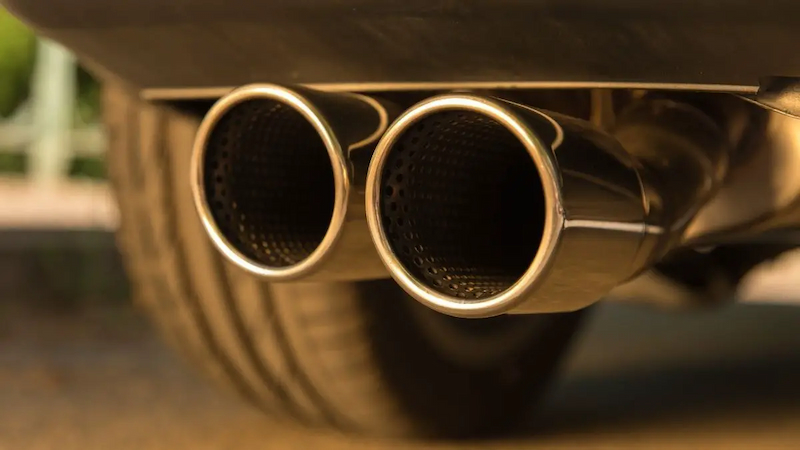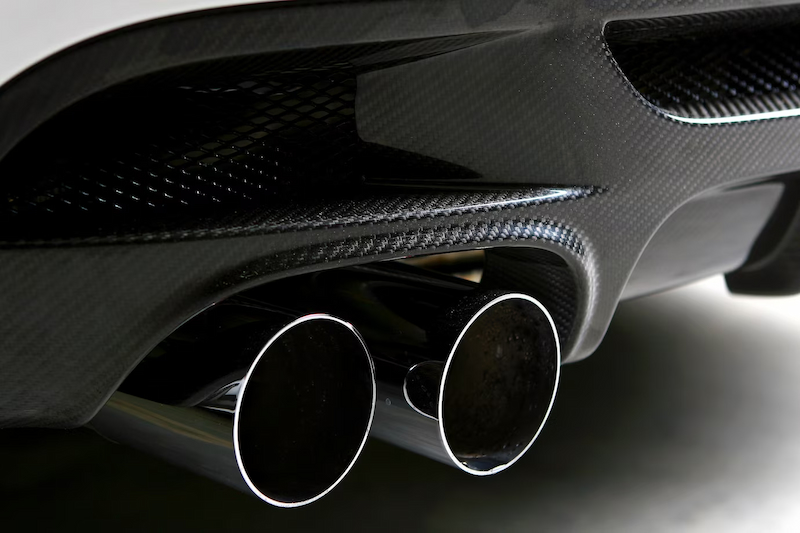When you think about the emissions a car produces you immediately think of the exhaust and how it has smoke coming out of it. While that’s a bad scenario in itself, it doesn’t prove the fact that the fumes coming from the exhaust tip are actually generated by the engine. The exhaust is there to do three things, provide a pathway for those fumes, reduce emissions and muffle the sound of the engine.
This is done with the help of different components with the catalytic converter and resonator being one of the most prominent. The former reduces emissions while the latter reduces sound and drone. They are equally as important but the resonator is not talked about as much since it’s usually accompanied by a similar component, a muffler.
Exhaust Resonator

What is it?
This is essentially a piece of tubing that is wider than the downpipe or any other section of the exhaust. This echo chamber is used to reduce the loud noise that comes from the engine as it produces power. A resonator exhaust is therefore placed before the muffler so it makes its job a lot easier.
Benefits
With an aftermarket resonator not only is noise not as apparent, but the performance of your engine is also improved. How? Well, cancelling out all those vibrations and loud sounds allows the engine to operate in a smoother fashion since there is less back pressure and trembling too.
Types of Resonators

Chambered
Also called the Helmholtz-type car resonator, a chambered resonator is able to cancel out sound waves thanks to the cavities it has each one with a different size. Thanks to the use of metal plates and a single chamber the sound from the engine comes out in the form of a cool buzz.
Dissipative
When it comes to the most common resonator used today, we have the dissipative type resonator. A dissipative resonator is able to absorb loud sounds rather than reduce them as it relies on fibreglass. This packing material helps cancel sounds and it comes in the form of a perforated or a louvered core.
Expansion Chamber
With an expansion chamber-type resonator on board, you get the simplest and most efficient solution. This is because an expansion chamber aftermarket resonator is simply put into a tube with different diameters. The change in diameters is what minimizes the pitch, volume, and frequency which lowers the sound that comes out of it.
Features That Matter in a Resonator

Size
The size of the resonator should correspond with the size of the muffler and the type of exhaust you have. Otherwise, you will either have a loud car or one that is going to perform poorly since the resonator will restrict more than just sound. The length of the resonator as well as it’s diameter plays an important role here.
Material
Preferably the material the resonator comes made of should match that of the exhaust. But if the exhaust is made of, say, mild steel, then you should go for something better. The best overall material for resonators is stainless steel as it’s quite durable and light while being rust-resistant.
This is extremely important as resonators are located in an area where they are exposed to road conditions and the elements the most. You can also go for a resonator exhaust made of aluminised steel but keep in mind that although it’s good at fending off corrosion, it isn’t as durable or as light as a stainless steel one.
Inlet Diameter
The inlet diameter is the opening of the resonator that connects it to the downpipe. Its size can vary too which is why it’s important to get the right diameter inlet as otherwise not only will the resonator not be able to fit but it also won’t be able to do its job properly.
Sound
Since a car resonator allows for sound to bounce around inside it, it still produces some type of sound when all that noise is filtered out. This is where you can determine the type of sound you want to exit from the resonator and go into the muffler. The muffler only reduces the intensity of the sound which is why the resonator is more responsible for the way your car sounds.
Installation
While a resonator isn’t that difficult to install it’s installation process should still be taken into account. The majority of resonators need to be welded in but if you can find one that can be slipped over the existing piping with just clamps to hold it securely in place then you’ve hit the jackpot. This is the easiest way to add an aftermarket resonator of any kind to an existing exhaust system and also one that is easy to remove when the time comes for such a thing.
Conclusion
As restrictive as they may seem, resonators are actually quite important for the performance of your car. Simple yet effective, nothing beats a good resonator and one that is able to last as long as your engine.


Leave a comment